A lush, green lawn is more than just a sign of curb appeal—it’s the result of consistent care, good habits, and avoiding costly mistakes. While mowing might seem like a simple task, many homeowners unknowingly damage their lawns with poor mowing practices. Over time, these mistakes can lead to thin, patchy, or yellowing grass that's vulnerable to pests, diseases, and weeds.
If you're serious about maintaining a healthy lawn, it’s time to mow smarter, not harder. Here are 10 common lawn mowing mistakes that kill your grass—and pro-level tips to avoid them.
| Table of Contents: How Proper Mowing Improves Lawn Health Common Lawn Mowing Mistakes That Kill Your Grass Bonus Tips: Level Up Your Lawn Mowing Game Mow with Precision, Grow with Confidence |
How Proper Mowing Improves Lawn Health
Mowing is an essential component of lawn care that has a direct impact on the resilience, health, and beauty of your lawn. It goes beyond simply mowing the grass. When done correctly, mowing encourages thicker growth, strengthens grass roots, and helps your lawn resist weeds, pests, and diseases. However, mowing improperly can have the opposite effect, causing stress to the grass, thinning patches, and increased vulnerability to environmental stressors.
To improve your lawn’s health, follow these key mowing practices:
Mow at the Right Height: A third or less of the grass blade should never be cut at once. Cutting too short can shock the grass, weaken its roots, and reduce photosynthesis.
Use Sharp Mower Blades: Instead of cutting grass neatly, dull blades rip it, resulting in brown tips and creating an environment that is more susceptible to disease.
Mow at the Right Frequency: Avoid mowing too often or too infrequently. Both can disrupt the natural growth cycle of your grass.
Mow the Dry Grass: Wet grass can cause clumping, uneven cuts, and increase the risk of disease.
Alternate Mowing Patterns: Mowing in a different direction each time keeps the grass from leaning in one place and encourages uniform growth.
Check out this helpful guide on why you shouldn’t mow wet grass to understand the risks and avoid common pitfalls.
Common Lawn Mowing Mistakes That Kill Your Grass
Improper mowing can quickly turn a lush lawn into a distressed one. From cutting too short to using dull blades, these common mistakes weaken your grass and hinder growth. Here’s how to avoid them and keep your lawn thriving.
Cutting Grass Too Short (Scalping)
Many people mow their lawn too short, thinking it reduces how often they need to mow. However, this practice, known as “scalping,” removes too much of the leaf blade and stresses the grass.
Why it’s Harmful: Because scalping weakens grass, it is more vulnerable to weed invasion, disease, and dryness. Additionally, it reveals soil, which facilitates the germination and establishment of weed seeds.
Pro Tip: Follow the 1/3 rule. A third or less of the grass blade should never be cut at once. For most lawns, this means mowing when your grass is about 3-4.5 inches high and cutting it to around 2-3 inches.
Using Dull Mower Blades
Over time, mower blades get dull. Many homeowners continue mowing with blades that tear instead of cut.
Why it’s Harmful: Dull blades shred the grass, causing ragged edges that turn brown and become entry points for disease and pests. This gives your lawn a dull, unhealthy appearance.
Pro Tip: Every 20 to 25 hours of mowing, or at least twice a season, sharpen your mower blades. For heavily used mowers or thick lawns, consider sharpening more often.
Mowing in the Same Pattern Every Time
Although it can appear innocuous, repeatedly cutting your lawn in the same pattern or direction is a common mistake in lawn maintenance.
Why it’s Harmful: Repetitive mowing patterns cause soil compaction and create ruts, leading to uneven growth and weak root development.
Pro Tip: Change your mowing pattern each time—alternate between vertical, horizontal, and diagonal paths. By doing this, wear patterns are avoided and the grass grows more erect.
Mowing Wet Grass
Mowing in the early morning when there is still dew or after a rainstorm may attract you. However, it is dangerous to cut wet grass.
Why it’s Harmful: Wet grass bends more easily, leading to uneven cuts. It can also clog your mower and cause clumping, which smothers grass and leads to fungal diseases.
Pro Tip: Wait until the grass is absolutely dry at all times. This ensures a clean cut and helps avoid equipment issues and lawn diseases.
Not Adjusting Mower Height for the Season
Keeping the same mowing height throughout the growing season can lead to seasonal stress for your lawn.
Why it’s Harmful: In hot summer months, shorter grass is more prone to drying out, while taller grass helps shade the soil and retain moisture.
Pro Tip: Raise your mower deck by 0.5–1 inch during the summer months to provide shade for roots. Lower it slightly during the fall to help prevent fungal issues over winter.
Bagging Every Time Instead of Mulching
Always bagging grass clippings may seem clean and tidy, but it deprives your lawn of valuable nutrients.
Why it’s Harmful: Clippings from grass can be used as a natural fertilizer. Removing them constantly forces you to rely more on synthetic fertilizers.
Pro Tip: Use a mulching mower to finely chop clippings and return them to the soil. This practice, called “grasscycling,” helps feed your lawn and improves moisture retention.
Mowing With a Dirty Mower
Neglecting mower maintenance—especially not cleaning the deck and blades—can spell trouble for your lawn.
Why it’s Harmful: Dirty mowers can spread diseases and weed seeds. Buildup under the mower deck also affects blade rotation and cutting efficiency.
Pro Tip: After every usage, clean the deck of your mower. Wash off any mud or debris and remove clippings with a brush or putty knife. Always disconnect the spark plug before cleaning for safety.
Ignoring Mower Maintenance and Tire Pressure
If your mower isn’t maintained properly, it can affect how it cuts and how evenly it travels across your lawn.
Why it’s Harmful: Uneven tire pressure or mechanical issues can result in lopsided cutting, rutting, and inconsistent mowing heights.
Pro Tip: Every month, check the tire pressure and look for any technical problems with your mower. A level mower ensures a consistent cut across your entire yard.
Mowing Too Infrequently
Waiting too long between mowing sessions often results in needing to cut too much at once.
Why it’s Harmful: Cutting too much stresses the lawn, shocks the root system, and contributes to thatch buildup.
Pro Tip: Usually, once a week during the growing season, or more frequently during periods of high growth, mow your grass regularly. Follow the growth rate of your grass rather than a rigid schedule.
Neglecting Lawn Edges and Hard-to-Reach Areas
Focusing only on the main expanse of the lawn while ignoring edges, corners, and areas around obstacles.
Why it’s Harmful: These neglected spots can become overgrown, encouraging weed growth and making your lawn look unkempt.
Pro Tip: Use a string trimmer or edging tool to maintain clean lines along sidewalks, driveways, garden beds, and fences. Sharp, clean margins improve your lawn's overall appeal and give the impression that it has been expertly maintained.
Check out thisDIY guide on cleaning your lawn mower's grass bag to keep your equipment in top shape and avoid unnecessary lawn damage.
Bonus Tips: Level Up Your Lawn Mowing Game
You can improve your mowing technique and encourage healthier grass by adding these simple ideas to your routine. Little adjustments can have a significant impact on your lawn's overall health and look.
Know Your Grass Type: Compared to warm-season grasses like Bermuda or zoysia, cool-season grasses like fescue or Kentucky bluegrass require distinct mowing techniques.
Time Your mowing: When the weather is cooler and the grass has dried from the morning dew, mow in the late afternoon or early evening.
Overseed After Mowing: After mowing, you can overseed your lawn in bare or thinning areas to improve density and overall health.
Water Before Mowing: Lightly water your lawn a few hours before mowing to make the grass more flexible and easier to cut. This also reduces stress on the grass.
Fertilize After Mowing: Mowing before fertilizing allows nutrients to reach the grass roots more effectively. Apply a balanced, organic fertilizer after mowing for optimal lawn health.
Keep Mower Decks Level: Ensure the deck of your mower is level to get an even cut across the entire lawn. An unbalanced deck can lead to uneven cutting and scalping in spots.
Protect Your Lawn Post-Mowing: Keep pets and kids off freshly mowed lawns to prevent compaction and give the grass time to recover.
Also, check out these summer lawn care tips to keep your grass healthy and thriving all season long.
Mow with Precision, Grow with Confidence
Your lawn is a living organism that responds to how you care for it. Your lawn has the best chance of thriving all year long if you steer clear of these ten typical mowing errors. A healthy mowing routine not only keeps your lawn looking great, it also builds resilience against drought, disease, and weeds.
Professional-looking lawns don’t require professional equipment, just a little knowledge and consistency. Take these tips, apply them to your routine, and watch your grass thank you with vibrant, carpet-like growth season after season.
Looking to upgrade your lawn care routine? WholeToolBox offers top-quality parts like air filters, mower blades, and spark plugs from trusted brands such as Honda, Toro, and Briggs & Stratton. Shop now for reliable tools to keep your mower and your lawn in peak condition!
FAQs
How often should I mow my lawn?
It depends on the grass and weather, but generally, you should mow once a week during the growing season. Avoid cutting more than one-third of the grass height at once to prevent stressing the lawn.
Can mowing too frequently harm my lawn?
Yes, mowing too often can stress the grass and weaken the root system. Avoid cutting your lawn more than once a week, and always follow the one-third rule (never cut more than a third of the grass height at once).
Should I leave grass clippings on the lawn?
Leaving grass clippings on the lawn can benefit your lawn by providing natural nutrients. However, if the clippings are too thick or clumped together, they should be removed to prevent suffocating the grass.
Why does my lawn look worse after mowing?
Your lawn may look worse after mowing if you're cutting too much off at once or using a dull blade. Both practices can stress the grass and cause uneven, brown tips.

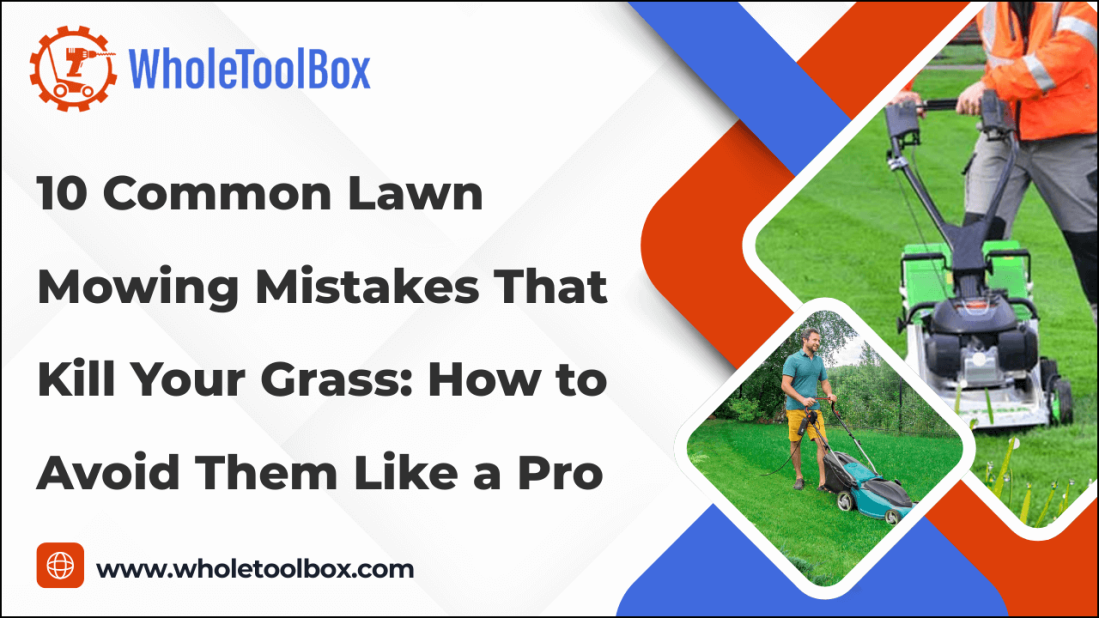


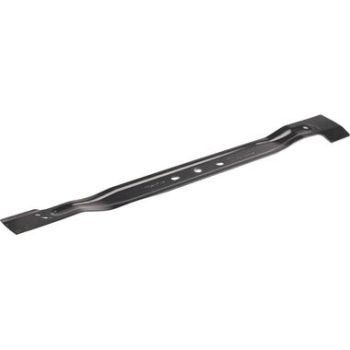
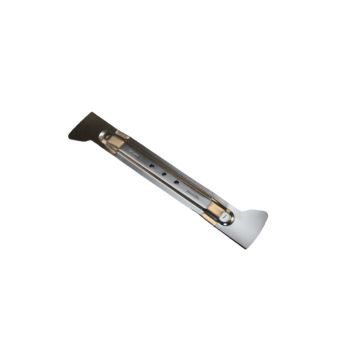
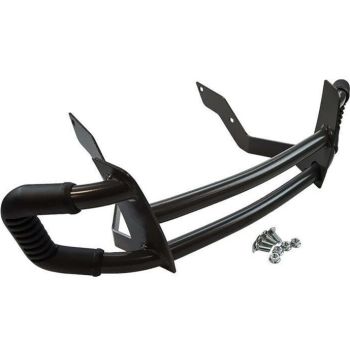
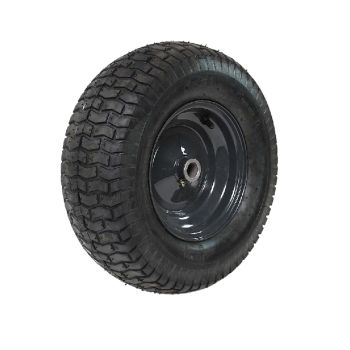
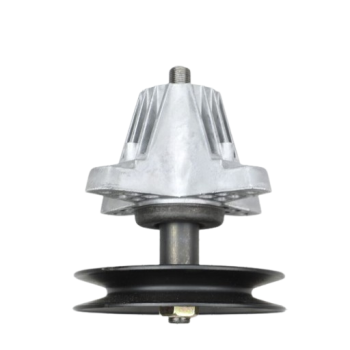





Validate your login